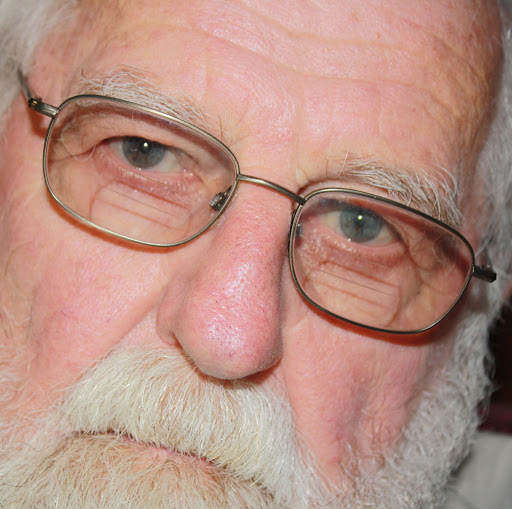Robert J Osborn
age ~70
from Jackson, NJ
- Also known as:
-
- Robert James Osborn
- Robert A Osborn
- Robert S Osborn
- Robt J Osborn
- Robert J Brennan
- Robert N
- Robert Osbornjr
- Roberta Osborn
- Ert Orn Ro
- Osborn Robert
Robert Osborn Phones & Addresses
- Jackson, NJ
- Lackawaxen, PA
- Fairfield, CT
- Bel Air, MD
- Abingdon, MD
- Essex, CT
- Upper Saddle River, NJ
- U Saddle Riv, NJ
- 3802 Baker Ave, Abingdon, MD 21009 • 4106278778
Work
-
Company:Journal of family practice
-
Address:110 Summit Ave, Montvale, NJ 07645
-
Phones:2013919100
-
Position:President
-
Industries:Periodicals: Publishing, or Publishing and Printing
Education
-
Degree:Associate degree or higher
Specialities
General Practice • Real Estate • Finance
Resumes

Independent Aviation & Aerospace Professional
view sourceLocation:
Greater Philadelphia Area
Industry:
Aviation & Aerospace

Robert Osborn
view source
Robert Osborn
view source
Robert Osborn
view source
Robert Osborn
view source
Robert Clair Te Osborn
view source
Robert Osborn
view sourceEducation:
Maryville Colledge 1948 - 1952
Bachelors, Bachelor of Arts, Political Science
Bachelors, Bachelor of Arts, Political Science

Robert Osborn
view sourceLawyers & Attorneys

Robert Osborn - Lawyer
view sourceSpecialties:
General Practice
Real Estate
Finance
Real Estate
Finance
ISLN:
917118072
Admitted:
2002
University:
Temple University, B.S., 1994
Law School:
Suffolk University, J.D., 2001
Medicine Doctors

Robert M. Osborn
view sourceSpecialties:
Family Medicine
Work:
Robert M Osborn DO
400 N 14 St, Independence, KS 67301
6203312070 (phone), 6203318657 (fax)
400 N 14 St, Independence, KS 67301
6203312070 (phone), 6203318657 (fax)
Education:
Medical School
Kansas City University of Medicine and Biosciences College of Osteopathic Medicine
Graduated: 1969
Kansas City University of Medicine and Biosciences College of Osteopathic Medicine
Graduated: 1969
Procedures:
Arthrocentesis
Destruction of Benign/Premalignant Skin Lesions
Electrocardiogram (EKG or ECG)
Osteopathic Manipulative Treatment
Skin Tags Removal
Destruction of Benign/Premalignant Skin Lesions
Electrocardiogram (EKG or ECG)
Osteopathic Manipulative Treatment
Skin Tags Removal
Conditions:
Acute Bronchitis
Acute Sinusitis
Anxiety Phobic Disorders
Disorders of Lipoid Metabolism
Abdominal Hernia
Acute Sinusitis
Anxiety Phobic Disorders
Disorders of Lipoid Metabolism
Abdominal Hernia
Languages:
English
Description:
Dr. Osborn graduated from the Kansas City University of Medicine and Biosciences College of Osteopathic Medicine in 1969. He works in Independence, KS and specializes in Family Medicine.
Isbn (Books And Publications)




Fair Employment In Northern Ireland: A Generation On
view sourceAuthor
Robert Osborn
ISBN #
0856407526




Name / Title
Company / Classification
Phones & Addresses
President
Journal of Family Practice
Periodicals: Publishing, or Publishing and Pr...
Periodicals: Publishing, or Publishing and Pr...
110 Summit Ave, Montvale, NJ 07645
Website: jfponline.com
Website: jfponline.com
OZZY'S TOWING AND RECOVERY LLC
SCARBOROUGH HIGH SCHOOL ALUMNI SCHOLARSHIP FUND INC
President
Osborn Auto Repair Inc
General Auto Repair
General Auto Repair
824 High St, Chestertown, MD 21620
4107783926
4107783926
Us Patents
-
Heat Exchanger Assembly
view source -
US Patent:53738969, Dec 20, 1994
-
Filed:Sep 15, 1993
-
Appl. No.:8/122056
-
Inventors:Robert J. Osborn - Orange CT
-
Assignee:The Allen Group - New Haven CT
-
International Classification:F28F 902
-
US Classification:165173
-
Abstract:A heat exchanger includes a metal tank having an open side and a flange around the open side, and a metal header plate connected to a plurality of heat exchanging tubes, the header plate having a channel around its periphery for mating with the tank flange. The cast metal tank has predominately thin walls and at least one cast indentation point for starting a drilled hole. The indentation point is located in a defined, limited region of the tank walls having a thickness greater than surrounding wall regions. The indentation point may be drilled out and, optionally, tapped, to form an additional access opening in the tank.
-
Heat Exchanger Assembly
view source -
US Patent:52576620, Nov 2, 1993
-
Filed:Mar 27, 1992
-
Appl. No.:7/859108
-
Inventors:Robert J. Osborn - Orange CT
-
Assignee:The Allen Group Inc. - New Haven CT
-
International Classification:F28F 902
-
US Classification:165173
-
Abstract:A heat exchanger includes a metal tank having an open side and a flange around the open side, and a metal header plate connected to a plurality of heat exchanging tubes, the header plate having a channel around its periphery for mating with the tank flange. An elastomeric gasket completely fills the space between the flange and the channel for restricting contact of coolant with tank and header plate surfaces therebetween and reducing crevice corrosion. The cast metal tank has predominately thin walls and at least one cast indentation point for starting a drilled hole. The indentation point is located in a defined, limited region of the tank walls having a thickness greater than surrounding wall regions. The indentation points or other openings in the tank walls may be relocated by cutting and welding them in different locations to accommodate different configurations in low volume production.
Classmates

Robert E. Osborn Jr.
view sourceSchools:
St. Bernard School Chicago IL 1961-1969
Community:
Glenn Miller, Florence Alexander, Dionne Graham

Robert Osborn
view sourceSchools:
Spring Lake High School Spring Lake MI 1985-1989

Robert Osborn
view sourceSchools:
St. Alphonsus School Chicago IL 1981-1985
Community:
Udo Wiedel, Sadie Bowdry, Robert Groth

Robert Osborn
view sourceSchools:
Thorp High School Thorp WA 1961-1965
Community:
Candy Plaster, Patrea Kristensen, Keith Taylor, Elizabeth Buchanan, Michelle Davis

Robert Osborn
view sourceSchools:
Augusta High School Augusta IL 1950-1954
Community:
Diana Williamson, Elizabeth Bettie, Melvin Kamm

Robert Osborn
view sourceSchools:
Manchester High School North Manchester IN 1971-1975
Community:
Jennifer Scheerer, Ricky Lester

Robert Osborn
view sourceSchools:
Orange Hunt Elementary School Springfield VA 1982-1983
Community:
Bill Gary

Robert Osborn
view sourceSchools:
Greenville High School Greenville CA 1985-1989
Community:
Ron Largent, Nina Trumpeter
Youtube
Myspace
Googleplus

Robert Osborn
Work:
ASI - Security Guard (2008)
Wal-Mart - Wireless Sales (2003)
Wal-Mart - Wireless Sales (2003)
Education:
Westwood College - Graphic Design & Multimedia

Robert Osborn
Work:
Burlington Northern Santa Fe Corp.

Robert Osborn
Work:
Designer Tree Service

Robert Osborn
Tagline:
Santa Fe, NM

Robert Osborn

Robert Osborn

Robert Osborn

Robert Osborn

Robert Osborn
view source
Robert Osborn
view source
Robert Osborn
view source
Robert Osborn
view source
Robert Ozzy Osborn
view source
Robert J. Osborn
view source
Robert Osborn
view source
Robert Osborn
view sourceFlickr
Get Report for Robert J Osborn from Jackson, NJ, age ~70













